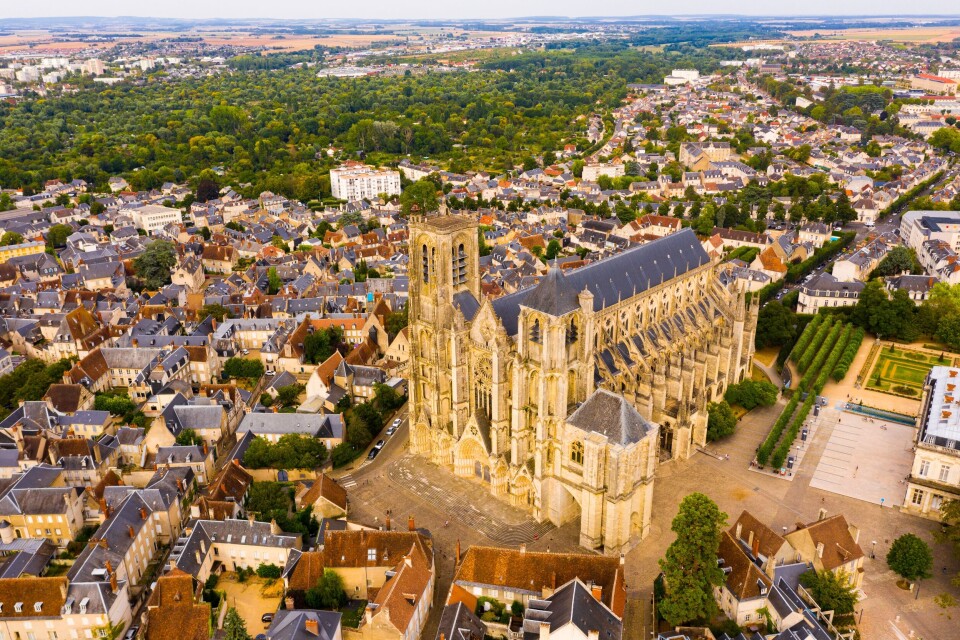-
Small lakeside French hamlet to be sold at auction - starting price €450,000
The tourist site has a collection of 13 gîtes and a swimming pool
-
Photos: The 14 villages vying to be France’s favourite in 2025
See the full shortlist and vote for your favourite
-
Know your cheeses and their seasons: which to eat in France in February
Cow’s milk cheeses dominate as winter comes to an end
France's geographical heart: where does the country's centre lie?
The controversial village at the heart of France

While Paris is the home of France’s policies and big decisions, it certainly is not in the most central location. This honour is claimed by the village of Bruère-Allichamps in the Cher, 36km south of Bourges.
As you can imagine, its claim to be the country’s geographical heart has been questioned over the years, but Bruère-Allichamps was the first French village to make such an assertion, and has several reasons for putting itself forward.
Having defeated Vercingetorix and the Gauls in 52BC, Roman legions chose to settle in Bruère, a strategic and central base that offered a plentiful water supply and a stone quarry for building temples, villas, an amphitheatre and stone monuments.
One of these relics was unearthed in 1757, having been used as part of a sarcophagus. This tall stone column topped with carvings was identified as a Roman milestone, then in 1799 was erected as a marker on the village crossroad. In 1950, the national cycle touring club added its own carved validation: ‘tradition designates this monument as the centre of France’.
So, this village of around 500 residents has seen itself as France’s ‘centre’ for over 200 years, a claim confirmed by early travel-guide writer Adolphe Joanne in the 1860s, but his calculations did not include Alsace and Moselle.
Determining France’s centre
In 1923, Larousse Mensuel Illustré published the findings of Professor E Bouant, who suspended a physical map to determine France’s centre, placing it in the village of Saulzais-le-Potier, a claim backed up by the astronomer and mathematician Abbé Théophile Moreux in 1947. Consequently, this village also displays a stone marking the centre of France.
Of course, the story does not end there. In 1966, mining engineer Georges Dumont identified Vesdun as the centre, and when France’s national geographic institute IGN was finally called upon to resolve this debate, they also named Vesdun. This would seem to clear up the matter, as long as you do not include Corsica or any of France’s other islands.
If you do, the centre turns out to be Nassigny, a village with fewer than 200 inhabitants.
Whatever your own conclusions, for the sake of simplicity, emotion and history, we seem bound to return to Bruère-Allichamps as the centre of France: it has the advantage of being the first to take on the role, and it even has a Roman milestone marker to back up its claim, one that dates back a couple of millennia.
So is it worth making the detour to visit this very central village? What can you expect to see?
After the obligatory tour around the Roman column and a couple of commemorative photos, you should definitely stop off for a drink and a breather to ‘centre’ yourself, then take time to visit the Abbaye de Noirlac, a 12th-century Cistercian abbey (see picture above) that is said to be one of the most complete remaining examples of this type of medieval religious architecture.
History of the abbey
Bursting with Gothic features, the structure was sold during the French Revolution and used to manufacture porcelain in the 1800s. It was then bought by the Cher département in 1909 for complete restoration. Now open every day from February 1 to December 23, the abbey hosts workshops and cultural events, and invites visitors to explore its walkways, grounds, and cloisters that are reminiscent of a Harry Potter backdrop.
Quietly existing between Bourges and Montluçon, Bruère-Allichamps might not seem a likely tourist destination, yet it has a certain charm, and its abbey is certainly a bonus for curious visitors.
Whether or not you agree that it is the true geographical centre of France, this little village seems to enjoy its claim to fame, and its history of welcoming visitors is certainly well established.
Related articles
Unveiling the history of rugby in La Rochelle
Loiret, France: Property watch
























